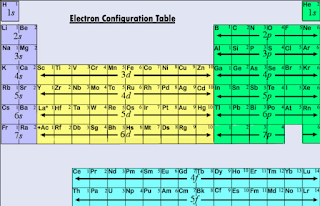Neon, a chemical element with the symbol He and atomic number 10, is colorless, odorless, tasteless, and lighter than air inert gas. it is the second lightest noble gas after hydrogen and glows reddish-orange on the vacuum discharge tube. It is widely used in fluorescent lamps and electric signs.
Till now, not any stable compounds of neon is discovered. As
for now, It has more than 12 isotopes discovered. Neon-20, neon-22, and neon-21
are the most stable isotopes of neon. It is used in high voltage warning
indicators, fluorescent lamps, and as a cryogenic in refrigerators.
You are here to know valence electrons and valency of neon, aren’t
you? But before that let's have some ideas about what these terms are:
Difference Between Valence Electrons and Valency
Valence electrons are the total number of electrons present
in the outermost shell of an atom (i.e. in outermost orbital). The valence
electron for a neutral atom is always definite, it cannot be varied (more or
less) in any condition for a particular atom and may or may not be equal to its
valency.
Valency is defined as the total number of electrons an atom
can lose, gain, or share at the time of bond formation to get a stable
electronic configuration i.e. to complete an octet. The valency of an atom can
be variable in different compounds or chemical reactions due to the different
bonding circumstances. Most of the time valency varies/changes due to change in
oxidation and reduction states.
Neon (Ne) Valence Electrons
There are four simple steps to find out the valence
electrons for neon atom which are:
Step 1: Find the Atomic Number
To find out the atomic number of neon, we can use the
periodic table. With the help of the periodic table, we can easily see that the
atomic number of neon is 10. As its atomic number is 10, it has two protons,
and for neutral neon, the number of protons is always equal to the number of
electrons i.e. has 10 electrons in its nucleus.
Step 2: Write Electron Configuration
Electron configuration is the arrangement of electrons on
the orbitals. The neon atom has a total of 10 electrons so, we have to put 10 electrons in orbitals. the first two electrons will go in the 1s orbital as the S orbital can hold a maximum of 2 electrons only. Again another two electrons will go in 2s orbital and the remaining 6 will go to the 2p orbital.
Neon electron configuration Ne (10) = 1s22s²2p⁶ (complete configuration)
= [He]2s²2p⁶ (condensed configuration)
Step 3: Determine Valence Shell
As we know, the valence shell of an atom can be found from the highest number of principle quantum numbers which is expressed in the term of n, and in [He]2s²2p⁶, the highest value of n is 2 so that the valence shell of Ne is 2s²2p⁶.
Step 4: Find Valence Electrons
The total number of electrons present in the valence shell of an atom is called valence electrons, and there is only one electron present in the valence shell of neon (2s²2p⁶). Thus, neon has eight valence electrons.
Valency of Neon (Ne)
There are many different ways to find out the valency of an
atom which reflects the ability of an atom to bond with other atoms. Valence
describes how easily an atom or a free radical can combine with other chemical
species. The valency of an atom is determined based on the number of electrons
lost, gained, or shared with another atom at the time of bond formation.
An atom is said to be stable when its outermost shells have
eight electrons (except H & He). If the total number of electrons in
outermost shells is between one to four, the atom has positive valency and if
electrons are between four to eight, the valency is calculated by subtracting
from eight and valency will be zero. Atoms having four outermost electrons
possess both positive and negative valency, and atoms having eight outermost
electrons, valency will be zero (i.e. noble gases).
Noble gases like neon have two valence electrons so it does
not require to lose or gain electrons to complete its energy shell i.e. stable duplet.
So that they do not have any tendency to combine with other elements which
makes the valency of neon zero.
We can also find the valency of neon with the help of the periodic
table. As neon belongs to group 8A which are groups of noble gases having valency
zero.



Post a Comment